#norse gael
Photo
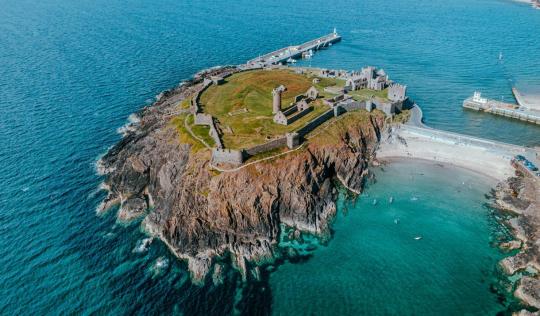
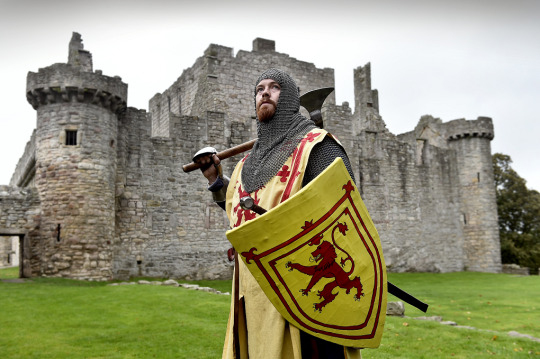
May 18th 1313 saw Robert the Bruce invade the Isle of Man.
The Isle of man has changed hands many times through the centuries, if you go back to Scotland before King Alexander III died, plunging the country into the Wars of Independence, he had extended his Kingdom to include Man and Berwick, both of which are part of England nowadays.
Scotland’s rule was not welcomed in 1275 an uprising in Man against Scottish rule was brutally suppressed. The chronicles tell us that…..
“ Upon the 7th of October, the Fleet of the King of Scotland put into the port of Ronaldsway. John de Vesci and the King’s nobles immediately landed their forces on the island of St. Michael, the people of Man being prepared for the encounter, along with Godred, the son of Magnus, whom they had made their king but a short time previously. The chiefs and officers of the King of Scotland, however, sent an embassy of peace to Godred and the people of Man, offering them the peace of God and of the King of Scotland on condition of their laying aside their absurd presumption, and of giving themselves up to the King and his nobles. As Godred, however, and some of his perverse counsellors did not agree to the terms of the embassy, on the following day, before sunrise, whilst darkness still covered the earth, … an engagement took place, and the unfortunate people of Man, running away, fell miserably “
If you notice the names of Godred and Magnus, the island was still very influenced by the Scandinavians. Their influence was again noted in 1291 when
” the Noble Lady Maria, Queen of Man" a member of the Scandinavian royal family of Man, did homage to Longshanks at Perth. Two years later in early 1293, Walter de Huntercombe, who held Man for a short time, surrendered the island to John Balliol by Edward’s order, of course Edward had the proviso that Balliol swore him allegiance. The next year Balliol refused to send Scottish soldiers to fight with Edward against the French, the Scottish King entered into the Auld Alliance and also formed a little known Alliance with Norway. Furious Edward marched his army into Scotland and the Wars of Independence raged for several years, during this time little is written about Man, it seems he garrisoned soldiers there and it feel under English rule. Edward I and his son Edward II “gave” the Island to differing lords to administrate until 1313, the chronicles tell us that
“In the year 1313, on the 18th of May, Lord Robert [Bruce], King of Scotland, put in at Ramsay with a large number of ships, and on the following Sunday went to the nunnery at Douglas, where he spent the night, and on Monday laid siege to the Castle of Rushen, which was defended by the Ilord Dungali Mac Dowyle 41 against the said Lord King until the Tuesday after the Feast of St. Barnabas the Apostle (June 21), on which day the said Lord King took the Castle.”
On the 20th of December, in the same year, Bruce granted the island to Thomas Randolf, Earl of Moray, “
The defeat of the English at Bannockburn consolidated the Scottish position. It’s a bit vague about what happened but the English seemed to have taken control, under Edward I by 1317, and he had committed the island to the safe keeping of John de Athy and orders him to provide three ships and
” a sufficient armament of warlike men “ to protect ” it against the hostile attacks of our enemies and rebels the Scots.“
But it is a bit confusing as , three months later, Randolf, Earl of Moray, is spoken of as ” being about to set out for the parts of Man,“
Some sort of truce prevailed for some time on the run up to 1328, when the independence of Scotland was formally acknowledged and the King of England gave an undertaking not tc assist any enemies of the Scots to dispossess their of Man,” it is probable that Man had before that date reverted to Scotland.
Roll on to 1333 and the English were at it again, with the help of the “disinherited” they helped John Balliol’s son Edward invade Scotland, which brought us to today’s date that year when Edward III gave orders that possession should be taken of Man. He granted the custody of the island to Sir William de Montacute, and, further, on the 9th of August, he gave it to him as his absolute possession-in the words of the grant - he
“ remitted, surrendered, and … assigned peaceful possession of all the rights and claims which we have, have had, or in any way could have in the Isle of Man, … so that neither we, nor our heirs, nor any other in our name shall be able to exact or dispose of any right or claim in the aforesaid Island,” thus not reserving any service to be rendered to himself.“
The Scots again threatened to retake Man in 1337 but it was unsuccessful, the Isle of Man has since been seen as part of England.
56 notes
·
View notes
Text
REN MARABOU AND THE BERSERKERS Unleash New Epic Single 'Bloodlines …Echos of the Norse Gaels', Now Available Everywhere
REN MARABOU AND THE BERSERKERS Unleash New Epic Single ‘Bloodlines …Echos of the Norse Gaels’, Now Available Everywhere
Irish Viking Metal/Norse Pagan Rockers REN MARABOU AND THE BERSERKERS have unleashed their new epic 9 minutes single ‘Bloodlines …Echos of the Norse Gaels‘, now available on all major platforms!
REN MARABOU AND THE BERSERKERS shared:“Happy BLOODLINES day Heathen Tribe 🛡⚔️ ‘BLOODLINES, echos of the Norse Gael’ is now available everywhere 🤘🏻🔥The release of this ‘Tales of Rune’ bonus track closes…

View On WordPress
1 note
·
View note
Text
Current brainworm, none of the Celtic cultures' creation myths have survived, even though they almost certainly had one. The closest we have is the Lebor Gabala Erenn from Irish mythology, but it isn't a creation story, it records the various settlements of Ireland, ending in the Gaels. However, it is thought that there are reflections of an earlier creation myth in the LGE and in the Tain, and there are similar themes that validate that the Gaels at least viewed the creation of the landscape in this way from various other stories. Additionally, we can compare other Indo-European creation myths to figure out what elements the Gaelic creation myth almost certainly would have had. These include:
Before creation, there is a void of some kind
In that void, fire interacts with water/ice to create the first life
A primordial bovine, most likely a cow (bulls were more common in IE cultures that emphasized pastoralism over crops. The Romans had a she-wolf, because they had to be edge lords)
One primordial being or possibly a set of twins who are sustained by the milk of the cow
One of the twins/the primordial being is dismembered to create the physical world
So already we have the makings of a general creation story, and if you're familiar with Norse mythologies, you might recognize it. In fact, it's thought that the Norse creation myth has retained the most elements of the original IE myth
However, scholars point out that the primordial being that is killed is called *Yemo, meaning "twin", which means there was likely originally two first beings. In the one sacrificing the other, the act renders the brother doing the sacrificing as the First Priest, who creates the concept of death, but in doing so turns that death into the living world. The sacrificed brother is then typically rendered as the First King and Ruler of the Land of the Dead. By setting up this order for the world, the First Priest establishes that life cannot exist without death (whether it be harvesting crops or butchering livestock), and typically, these myths continue and establish the role of the priests in society, who's job it is to ensure the continuity of the original sacrifice and maintain the living world
Now, here's where we get into my speculation;
I think it's likely that the Irish creation myth involved a set of twins. Off the top of my head, I think that possible reflections of this can be found in the brothers Amergin and Donn and in the Donn Cuailnge and Finnbhennach from the Táin. With Amergin and Donn, Donn insults the goddess of the land and is drowned. In doing so, Donn becomes a god of the dead and all the souls of the dead have to gather at or pass through Tech Duinn. Amergin however, secures the support of these goddesses and is able to go on and give order to the Gaelic rule of Ireland by deciding who will rule what and serves as the Chief Ollam (bard) of Ireland. In the Táin, after the main Plot has gone down, the Donn Cuailnge and Finnbhennach fight and the the Donn Cuailnge ends up killing Finnbhennach. As the Donn Cuailnge passes through the landscape, pieces of Finnbhennach drop off his horns and form/name part of the landscape. I think it's also interesting how in both these stories, one of the duo is explicitly associated with the color white (Amergin is called "white knees") and the other one is dark, but the opposite one dies first in the stories
Also, if we look at myths like the creation of the Shannon and the Boyne rivers, where in the goddesses Sionnan and Boann, respectively, die in the rivers' creations, we further see that the death of one figure to create an element of the landscape is a relatively common one, so a creation story similar to the one I hypothesize the Irish had wouldn't have been outside of pagan Irish belief
Additionally, if we look at the duíle, kind of like the Irish elements/natural features, we see that the nine elements/features are each explicitly associated with body parts. Stone is associated with bones, the sea with blood, the face with the sun, ect. I think this could be a call back to that earlier creation myth
Off the top of my head, that's what I've been mulling over. Idk, I might be completely off the mark, but if anyone wants give their thoughts, I'd love to hear them. I'm certainly not an expert in Irish mythology and there may be some key factor that completely sinks this idea
#Sword speaks#Irish mythology#Irish pagan#Irish polytheist#Celtic pagan#Celtic polytheist#creation myth#idk man my brain has been like a dog with a bone with this for days and I'm curious what others might think
233 notes
·
View notes
Text
A Thing Of Vikings Chapter 51: Mere Anarchy Is Loosed Upon The World
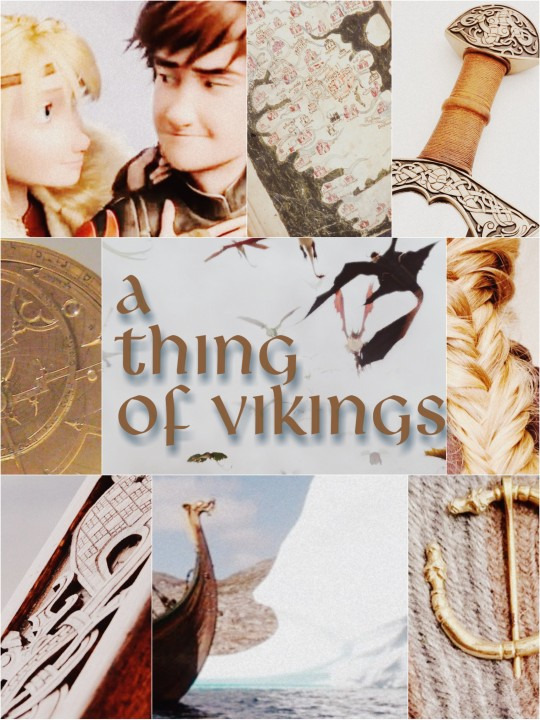
Chapter 51: Mere Anarchy Is Loosed Upon The World
Furthermore, the legally mandated food and housing welfare requirements for all members of Berk's holdings—a holdover from the days of the Dragon War, when a surprise dragon raid could put any of the Hooligans out of house and livelihood—helped significantly with accelerating the rate of social, cultural and economic growth.
The end result of the pattern of absorption was that, by the mid-1050s AD, Eire was politically and socially unified, integrated and enfranchised under Berk's auspices as a province of the newly created North Sea Empire. With the second-highest per-capita productivity in the Empire, Gaoidhealg forming one of the initial core Imperial languages, and their voting block resolutely backing and supporting Hiccup Haddock in the Grand Thing, the actions of the Eirish had, and continued to have, an indelible impact on the society, culture, economy and political life of the Empire…
…This is not to say that all went smoothly, especially at first, before the pattern had established itself. The Hooligans took significant time to formulate specific policies and end goals in regards to Eire, and there was also staunch resistance due to the fact that Eire had been a formalized caste-based inequitable society, and had no cultural experience with the Hooligans' more egalitarian traditions. In contrast, the Norse-Gael towns that dotted the coast of the island were easier to acculturate, as they already had the cultural traditions of the proto-democratic Viking Thing and the social closure effect of the holmgang.
Further complicating matters were the long-entrenched conflicts between the native Eirish and the Vikings, and the religious differences between the Norse Hooligans and the Christian Eirish. As the Eirish had no experience nor expectation of actual intent of peace from Vikings, and no worldview that would allow them to see the act of dragon-riding as anything other than witchcraft or devil-worship, it was an uphill struggle for the Hooligans to convince the Eirish of their peaceful intent, much less politically and socially integrate the island's populace—not helped by the necessity of self-defense against preemptive attacks.
—Origins Of The Grand Thing, Edinburgh Press, 1631
AO3 Chapter Link
~~~
My Original Fiction | Original Fiction Patreon
11 notes
·
View notes
Text
aw poor Wales got colonized by England. not to worry people of Wales I'll save you from English tyranny and introduce you to a whole new world of norse-gael tyranny
4 notes
·
View notes
Text
Founders' Era Character Sheet - Roderick McKenzie
Hogwarts is not just my home, it is my life, my love, and my blood.
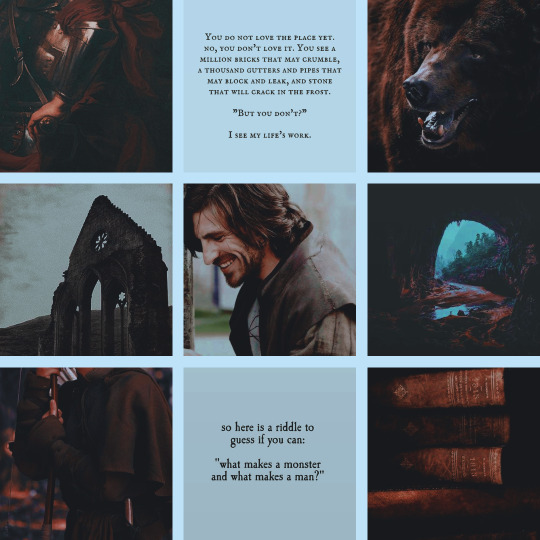
࿐ General ࿐
Full Name: Ser Roderick McKenzie
Name Meanings: Roderick: "Glory" | McKenzie: "the fair one"
Birthdate: February 25, 966 AD
Zodiac Sign: Pisces
Personality Type (MBTI): ESFJ
Blood Status: Pureblood
Ethnic Background: Caucasian
Sexuality: Bisexual
Residence: in a cottage near the Hogwarts grounds

࿐ Physical Appearance ࿐
Hair: Dark Brown
Eyes: Hazel
Height: 5'11"
Weight: 166 lbs.
Body Type: Mesomorph
Skin Tone: Pale with yellowish undertones
Faceclaim(s): Eoin Macken
࿐ Background ࿐
Hometown: Wexford, but spent a few years in Wessex
Roderick grew up in a small village in Wexford and for the first few years of his life lived better than some with the support of his father and the finances of his mother. After Braonán was killed by muggles and their family fled back to Thalia's home in Wessex, he grew a bit restless and set out into the world.
࿐ Family ࿐
Mother: Thalia McKenzie of Wessex
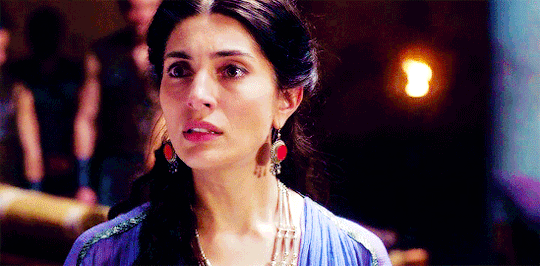
Lady Thalia was a healer by trade and a woman of wealth attributed to the merchantry and magic of her grandparents. To those that looked a little deeper, they would find that it was not just by the way of the earth that she helped people, but with a little helping hand from magic. Unlike her parents who believed that it was best kept hidden from muggle populations and resigned themselves often to their grand secluded home, Thalia wished to use her talents to the benefit of all, and was quick to become dissatisfied with the imposed limits of her abilities. So, she took just enough of her family's money and ran off to Wexford in the hopes of starting anew.
It was then that she met Braonán McKenzie who seemed quite taken with her at first glance, though it had taken her much longer to warm up to him and his somewhat shameless flirations. One day, he caught her using magic and was overjoyed to reveal his similar nature to her as well, and offered to provide her with anything that she needed to continue her work, including a partner if she so wished. She accepted.
Upon Braonán's death, Thalia was distraught— especially considering she was left with three children to raise and feared greatly for their safety and for Astraea's wavering health. She uprooted herself once again and journeyed back to Wessex with her children, only to find that her parents had died many years ago. With some care and magic, she re-established its grandeur and continued to raise Astraea while Roderick barrelled out into the world and Hemera stayed behind to help.
Father: Braonán McKenzie

Braonán McKenzie was a Norse-Gael wizard from the newer town of Wexford, living well enough to gain a bit more prominence in the surrounding area than he would've liked to account for. He was quite the wit and roar at festive occasions in front of the public eye. Behind closed doors though, he had quite the proclivity for transfiguration — and rumor had it that in his absence from his home, there seemed to be a particular crow that kept a watchful eye over parts of his village. Little did they know.
There was one person in particular, a newcomer, that said crow cast his gaze toward, though: Thalia, who had wowed him from a distance with her care and attention for the ill and damaged of whom she had yet to even know. He sought after her, yet she did not truly begin to warm to him until he divulged that they shared abilities in magic. Eventually they married and had three children, but unfortunately Braonán would only be able to spend so much time with the youngest before he was targeted and killed by muggles.
Twin Sister: Hemera McKenzie

Roderick and Hemera often locked horns in their youth as the latter's means of achieving her goals always seemed too covert for Roderick's tastes. While he does love and care for her, part of him wonders what lengths she would go to in order to get what she wants, and thus finds himself at odds with her more than on her side. Her preference for a more inconspicuous influence by way of whispering in the ears of wizards and nobles alike is, in many regards to him, unnerving. Yet, they are brought together most often through their affection for Astraea.
Youngest Sister: Astraea McKenzie

The youthful light of the McKenzie family, Astraea's life was held very tightly by both Roderick and Hemera as they looked after her in her youth and all the times that she had fallen ill. Admittedly, he is much closer to her than he is to Hemera, and spent a great deal of time secretly fretting over her health and happiness. As much as Roderick may vocalize her strength of being, secretly he does fear that there may come a day when the next sickness that befalls her will be one that she won't be able to shake off.
࿐ Magic ࿐
Wand:
Wood: Fir
Core: Dragon Heartstring
Length: 12"
Flexibility: Pliable
Special Abilities: Animagus (black bear)
Follower of: Godric Gryffindor
Boggart: Dead unicorns
Riddikulus: Rag dolls wiggling around
Patronus: Black bear
Patronus Memory: The opening of Hogwarts (earlier: helping Hemera and Astraea search for fairies as kids)
Amortentia (what he smells like): dark liquor, cabbage, oak trees, and cement
Amortentia (what he smells): tbd
࿐ Career ࿐
14-19: Builder's Apprentice
19-Death: Architect of Hogwarts
22-23: Cursebreaker
23-Death: Groundskeeper/CoMC Professor
Personality & Attitude: One of the first things people will notice about Ser Roderick is that he wears his emotions on his sleeve. He must work hard to hide his transparency as it is usually never too hard to perceive what he is feeling by a mere glance at his face. With that comes an understanding that one will always know how he feels about them and where they stand, even if so few words are uttered between them. Roderick is not the kind to give up on people easily, and thus as a professor feels a duty of care to each of his pupils. Even as a friend and brother, this rhetoric stands strong—so should any betrayal be felt between people he considers his comrades, it will hit harder than a mere hurt.
As a mentor he is responsible, yet when on his own he may be prone to getting himself in trouble even as he grows more pensive with age. His easy mentality becomes more rigid in moments when he needs to step up and take charge, yet a good-natured humor will always accompany the serious moments people experience with him. When not experiencing a bout of aforementioned pensiveness, he can in fact be quite charming, and is usually quite fun company to keep.
Priorities: Astraea, Hogwarts, the safety and wellbeing of the students and other wixen
Strengths: Bravery, loyalty, cooperation, battle (magic and physical), construction, metal-charming
Weaknesses: Personal recklessness (everyone else gets dad-voiced), repressed self-loathing, cursed (ruh roh), likes alcohol a bit too much
Favorites: Forests, tombs (formerly), Hogwarts, dining with others, creatures
࿐ Relationships ࿐
*Anyone can feel free to reach out if they'd like to discuss a potential plot or relationship!
Friends:
Godric Gryffindor -
While roaming around as a teen and working as a builder's apprentice, Roderick met Godric — and after sharing in a bit of quips about the similarity of their names, came to be friends through their shared mindset about many things and grand aspirations. Later on as Godric and the rest of the founders were setting their plans in motion to build Hogwarts, Roderick was more than happy when he was called upon by his lionhearted friend to help construct plans for—and eventually fortify and teach at—the school.
Rowena Ravenclaw -
Roderick met Rowena through Godric, and while his occasional recklessness initially acted as a bit of a deterrent in the development of their friendship, they eventually came to consider one another friends—especially after Rowena took Astraea under her wing.
Enemies:
Marron Decharn -
A true friend since childhood, or so Roderick thought. Marron was just as wild as Rod was in his youth, but much more willing to take risks in darker and more dangerous things. He was the first one to tip Roderick on to curse breaking as a profession, and thus gained experience in the field during the time in which Roderick was busy fortifying Hogwarts. Soon after the initial construction was complete, he joined his friend in exploring the world and had every intention of breaking curses together until their dying days, come sooner or later. Yet, Marron was not as willing to let go of Roderick so quickly, as when a curse-breaking venture gone wrong put Roderick at death's door, Marron was fully prepared to use even the darkest methods possible to keep his friend alive, even if it meant he'd lose a companion.
Celyna -
A twisted woman for whom helped "save" Roderick at the request of Marron when he was at death's door. She was cruel, unrelenting, and treated Roderick incredibly inhumanely during the months that she aided in healing him from the brink by force-feeding him unicorn blood. There was an element to her that was manipulating and incredibly alluring, for which Roderick only managed to resist later as he fled with no more physical wounds to be seen but a mark upon his soul.
Vela - @potionboy3
She's tried to kill him! Ain't that exciting? - Stuff tbd
Betwixt - @hphmmatthewluther
Stuff tbd
Work Acquaintances of the Unfriendly Variety
Brunhilde of Cologne - @endlessly-cursed
S/O:
࿐ Misc & Trivia ࿐
Had a difficult time figuring out what he wanted to do with his life....probably needed some career coaching 😏
As the result of some recklessness with a cursed object and the subsequent methods for which he was saved from death, Roderick is cursed to turn into his animagus form from sundown to sunup, lest a drink of unicorn blood save him a night of transformation
Upon becoming healthy, he swore that if he ever saw Marron again that he would kill him, but whether or not he actually could do it remains to be seen
His knighting was not from the muggle world, but of the wizarding world
Had such a terrible event not ended his fleeting career as a curse-breaker, Roderick would certainly have continued it until his death
He may or may not have snuck mead to a student before
Very few people outside of those present at the scene know of his curse, including Astraea, Godric, and Rowena. Otherwise, he is very cautious with whom he shares the information
The warding charms that he placed on Hogwarts sustained until expansions were made and new advancements in spells were created — yet the old warding still remains on the older parts of the castle
His intrigue with magical beasts began when he was young, but was never a true aspiration until he had to think about what to do once curse-breaking was out of the question
#oc: roderick mckenzie#hp founders era#hp oc#hogwarts oc#hogwarts headcanon#founders era oc#The Bear is here!#watch me find so many mistakes in it after publishing
28 notes
·
View notes
Note
Hello! I guess it could be considered as spoiler, but I was wondering, could you share a little more about the gods of Northern Passage? And I know we can choose if our mc is religious or not, but will we be able to also choose which deity they "follow"?.
this is something that will very slowly be revealed throughout the story, but i can give a basic rundown on all the gods we've seen so far. also, as for your last question, you will not get to choose your deity… they've already chosen you 😇
specifically for these gods, these are the northern beliefs; it varies a little between north and south, and most of northern Adrania's beliefs are influenced by Gael. the Wolfmother and all her children are universal deities, while the Stormbringer is depicted differently down south, as well as the Messenger and the Traveler.
The Wolfmother: she is Thee main god, the creator, and is depicted in the form of a large wolf. most people worship her alongside a smaller deity that is typically specific to them (like Merry worshipping the Stormbringer since she spends a lot of time at sea). the story goes that the Wolfmother discovered humanity after they stumbled out of the sea, and raised them alongside her two wolf children, and humanity owes their existence to her; otherwise they would have drowned in the sea.
The Sun & The Moon (no official name yet because i'm bad at coming up with names): these are the twins of the Wolfmother and are also depicted as wolves, with one representing the sun and the other representing the moon. you can see them in the temple with Lea in ch1. i pulled a lot of inspiration for the Wolfmother's children from Skoll and Hati in norse mythology. though unlike those wolves, these wolves are essentially responsible for the sun and moon, and make sure they rise each day and night, and do so to ensure humanity's survival; they see humanity as their sibling.
The Firstborn: depicted as a white wolf, you can also see this one in the temple with Lea. they are considered a malevolent deity and was the first born of the Wolfmother, before the twins, and they did something that resulted in eternal punishment. they are typically worshipped alongside the Stormbringer, though “worship” is used loosely. more like people pray to them out of fear, and to appease them. the Firstborn represents the sea, though most of their power has been lost over time as a part of their punishment.
The Stormbringer: the Stormbringer is another sea god, though lesser than the Firstborn. goddess of stormy seas & is usually worshipped by pirates, sailors, fisherman, etc. she's a bit of a cross between a selkie and nokken. she's a kind of “chaotic neutral” god.. though most of these gods fall into that category, i suppose. in the south, she goes by a different name and is depicted more as a mermaid/siren.
The Messenger: the god of omens and death. typically depicted as an anthropomorphic crow with many eyes, it manifests as various animals including flocks of crows, wolves, and deer. In the north, this god is seen as a benign deity, but down south it's considered malevolent and it's believed that seeing an omen is a curse. the messenger is responsible for sending omens and essentially bringing death - think like the grim reaper.
The Traveler: this is a polarizing deity with some people considering them a cruel trickster god while other people see them as a benign and kind deity. their story is told in game by clementine; this god is one of the few that is actually recorded as being mortal once, and after death they became a god, though it's unknown how. they're depicted as a man with the head of a jackal, and they wear humble travel clothes with bells sewn into their cloak. they like to play tricks on people, a bit “childish” but ultimately they're the god of wanderers and lost souls. after the Messenger brings death the Traveler comes in after and ensures the souls of the dead find their way home (but only after tricking them a few times first) i imagine the traveler to be worshipped by people that live on the road and don't really have a place to call home.
there are various other minor gods throughout Adrania and Gael, though these are the main players that will be relevant in game. there are two other major gods we'll learn about (tentatively) in ch3.
#under a readmore for length and if u don't want any spoilers i guess#thanks for the ask :-)#lore#ask#anonymous
60 notes
·
View notes
Text
More fanfiction to come…now, here’s the plan
The 2. Season isn’t that far away, and I’ve been itching to write more for Vinland Saga. Thing is I don’t like to mess with canon too much, just a personal preference, but I may have found a compromise of sorts. A storyline that runs parallel to the second arc of the manga (and presumably season 2), and is thus kind of a canon-compliant AU…if that makes sense.
Now, I haven’t been subtle about the fact that Askeladd is my favourite character; he ain’t a good person, but he’s a damn good character. Naturally, I was sad to see him die, despite it being a great way to end his story and an important plot point overall.
This AU will be a “what if Askeladd survived”-story, but Thorfinn has no clue, so his story progresses just like in the manga. Instead of dying pretty quickly in Thorfinn’s arms, Askeladd is slowly bleeding out, but unconscious due to the sudden blood loss. This gives others, who see him as a valuable piece they want to keep in the game, enough time to switch him with a corpse and spirit him away...
Basic premise is:
Presumed dead and with a new identity, Askeladd must leave Canute’s side, to serve the prince’s and Wales’ interests abroad. He travels to the Hebrides with those who saved his life, acting as Canute’s eyes and ears in the various kingdoms of the region. From there he begins to subtly influence the course of history...and faces Vikings threatening his new home.
A bit about the historical background/inspiration:
When I wondered where Askeladd could act without interfering with Thorfinn’s storyline, I first checked Scotland and Ireland…and there was quite a bit going on at the time. Just a few months after Sweyn Forkbeard’s death, there was battle at Dublin, the Battle of Clontarf, which shook up the political landscape of those regions quite a bit.
Interestingly, I found out that only a few years later the Sudreyar, the Hebrides and Isle of Man (+ plus a few other islands), suddenly came to be ruled by a relative and vassal of Canute…there is a story gift-wrapped right there, come on. It’s a perfect scenario to have Askeladd be the one pulling strings behind the scenes.
Now, about the people he will be living amongst, and who save him in the first place. Early on during the Viking Age, Scandinavians figured that they could not only just raid the coastlines of Scotland and Ireland, but also settle down there. This resulted in the minor kingdoms and earldoms of the Norse-Gaels, descendants of both the Norse settlers and the native Gaelic population. They still got raided and even went raiding themselves, and of course were kinda caught up between everyone.
There was even more going on at the time, but I don’t want to spoil too much, as I’ll try to weave in as much history as possible. I plan to add a bit of historical context and background information in notes at the end of chapters, whenever relevant. Of course, since it’s still fanfiction meant to entertain, and since sources are sparse, it naturally won’t be 100% accurate. I’m not a historian, I’m gonna take liberties for the sake of the story.
I hope to start publishing chapter for “Dead Man’s Tale” around the time season 2 starts airing. If you have questions/are curious about something, don’t hesitate to send me a message.
26 notes
·
View notes
Note
Uh, not to be that person but it's Ghàidheil for Gaelic and Norse ancestry not Ghaeil. Maybe open a book or something? ¯\_(ツ)_/¯
Hey anon! Thank you for coming to my inbox.
Not to be that person either but, The Norse–Gaels were of both Scottish and Irish and I very much intended to use the Irish word.
Old Irish: Goídil; Irish: Ghaeil; - I used Ghaeil as it's modern Gaeilge but both are correct
Scottish Gaelic: Ghàidheil,
All mean 'Gaels', though if we're being technical the fictional werewolf of Irish decent would be called Gall-Goídil (Foriegn Gaels)
The Triskelion, the only defining Hale trait we have, is Irish Celtic, not Scottish Celtic, and mixing Gaeilge and Gaelic is a tired trope. I do everything in my power to make sure people understand and know that while we mix their history and language a lot in our western media, they are two different people.
And so you know, I've opened several books on this subject.
Mo sheacht mbeannacht Ort!
#anon questions#anon hate#You want to come into my house and correct me#Fine#I'm OK with that.#But I will not tolerate it
6 notes
·
View notes
Note
i thought u were norwgian or smthing lol u look like a viking
My family is largely Norwegian/Scandinavian. There's some Scottish and Irish in there too but I was born in Australia however. My grandmother can trace my line back to the Gallowglass mercenaries (gallóglaigh), which were Norse-Gaels, hence my URL.
5 notes
·
View notes
Text
The Spirit & The Moon: My journey thus far.
I began my spiritual journey years ago, in the same town where I was born after spending much of my childhood away. At first it was merely a quest for understanding, a journey into the cosmos to find peace with existence itself. In time the things which I wished to understand became so much larger than myself, I began to truly understand how infinite the cosmic forces and all their knowledge really were; and that they just like us had names.
My research began with the Spirit itself, the very thing that makes us mortals what we are, our will to fight and to survive, or to die in honour. During this period of my life I explored various different faiths and researched their ideologies and values as well as the roots of their spiritual beliefs, and it was during this time that the cosmic forces which shaped these various faiths became so apparent to me. This led me to my eventual faith as a Pagan, a worshipper of trees and stars, the old Gods, and the very Moon herself. As a Devotee of the Moon I continued my search for answers to the mysteries of the universe, under her light I sought the voice of the universe itself, and there I heard the sounds of ancient energies at work, the winds and the grass speaking to one another in a language long forgotten. The first tribes understood this language, and their children's children inherited this knowledge in repetition long after spreading across the land, spoken by those who would come to be known as the Norse and Gaels.
This language was once understood by tribes spanning the globe, from the East to the West stories have survived that carry its essence, the understanding of nature itself, however the earliest it was ever described in text was in the runes gifted to mankind by Odin, so the path of an Asatruar became clear to me. Having since learned of my Gaelic heritage my understanding thus far of what remains has only widened, and so I chose to begin writing a public journal in hopes of better cataloguing my research, and sharing what I've learned with those who are on similar paths to mine, however far along they may be in their journey.
There is much peace to be found in understanding, and though the universe may always keep its dearest secrets, it will whisper to those who listen.
#pagan#paganism#forn sidr#asatru#ancestry#heritage#history#lineage#spiritual journey#faith#spirituality#nature#naturalist#Norse#Normani#Gaelic#Galli#Germanic#Indo-European#Proto-Indo-European#religion
3 notes
·
View notes
Text
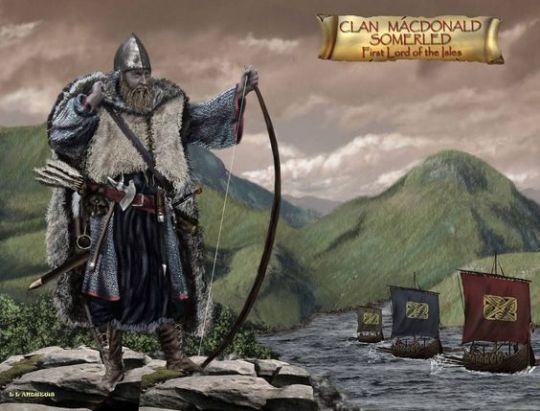
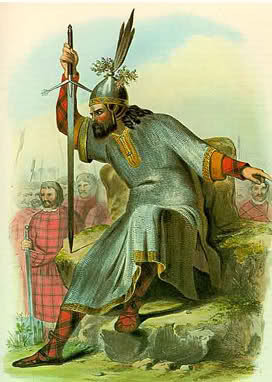
On January 6th 1156 Somerled met the Norse at the Battle of Epiphany.
This little known battle is all the more extraordinary as it was a naval affair, thought to have been fought off the coast of Islay.
The western Isles and Isle of Man were part of the Kingdom of Norway, but with the King being so far away and often seen as weak the region was an area where the warlords reigned and often battled for supremacy.
At the head of this battle was a man we know mostly by the name of Somerled who was no ordinary warlord. He may have been a gall-gàidheil, or Norse-Gael, but his loyalty was biased to his Scottish ancestry, although he had his own agenda of conquest and political authority.
Against him was the Norse Godred Olafsson (Godred the Black), King of the Isles, Godred, sometimes called Godfrey by the English was Somerleds brother in law, his sister was Raghnailt, their father, Olaf, the previous King of the Isles, had been murdered by their cousins three years previously, no loyalty with these families! Godreds seat of power was Isle of Man
Godred was a harsh leader and made many enemies, some of whom approached Somerled who agreed to their plan to overthrow Godred and replace him with Somerled's son Dubgall mac Somairle.
He began preparations and began construction of 80 ships modelled on the Norse longship. Word got back to Godfred that Somerled was drumming up support and set sail to sort things out.
The fleets of Godred and Somerled met off Islay, to the north at Rubh' a' Mhaoil, on the night of the Epiphany on 5–6th January. Can you imagine the sight of two "viking" fleets lit by torch light going up against each other in the dead of the night!!!
The Battle itself was inconclusive; so the two leaders sat down and reached a compromise agreement. Somerled would have the islands of Argyll including Mull and Islay, while Godred would keep the rest including the Western Isles and the Isle of Skye. But it was an uneasy peace, and two years later they were back at it again with a second sea battle. This time the result was in no doubt: Somerled had smashed the Manx fleet, and Godred fled the scene.
Somerled’s empire now stretched from Lewis to Man, and he styled himself as the ‘King of the Isles’. Nominally he held the islands from the Norwegian Crown, but in reality he ruled as a free prince, and gave his loyalty to the Scottish king.
Somerled was later deposed and possibly assassinated by a Scottish Clan who were flexing their muscles and gaining powerful friends in the Royal court, they were The Stewarts, but that's another long story.......
20 notes
·
View notes
Text
it’s midsummer!
Here are some highlights from Ronald Hutton’s Stations of the Sun about the history of it in Britain:
probably pre-Christian by its prominence and early mentions, but like with most pre-Christian and pre-Roman British Isles stuff, the first written accounts are by Christian monks with a tendency to have characters turn to the camera and say ‘and monks will come and prove the druids wrong bleep blorp christ’
flaming wheels, apparently, became popular in the early second millennium partly because of a saint-myth about aquitane pagansrolling a big fiery wheel
according to a 14th century monk the people of shropshire (who are not called shropshites) made three fires
a bonfire made of bones without wood
a wakefire made of wood without bones
a st johns fire with both wood and bones
(apparently bone burning scares dragons off??)
there are other possible sources of the word bonfire. could be from boon (neighbourly goodwill), Danish/Norse baun (beacon), or ‘bane’ (of evil things)
pageants... big bonfires everywhere... flower garlands... enormous parades with torches, in london 4k strong...
the big London parade sometimes had a giant puppet called LORD MARLINSPIKES and, once, a ‘serpent that spat fireballs’
it was a popular time for divination, to the point Bartholemew Iscanus recommended 15 days of penance if you tried to predict the future this week
during the Reformation, the royals and new church opposed them partly because they’d just instituted protestantism and a big load of armed citizens might have meant rebellion.
In Canterbury this turned into a sort of war between the cathedral and town officials over this. That year:
"A character called 'Railing Dick' led a procession of boys around [the bonfire], carrying birch branches and singing bawdy songs."
big in Scotland, bigger the less Gaelic the area was, apparently from a belief the fires brought protection
but it was HUGE in Ireland. the Scots and Irish Gaels’ ideas of Midsummer were different!
4 notes
·
View notes
Text
Irish Vikings REN MARABOU AND THE BERSERKERS Release Epic Saga, New Album "Helgafjell (Holy Mountain)", Out Today!

youtube
The wait is over! Today, March 29th, Irish Vikings REN MARABOU AND THE BERSERKERS unleash their epic new saga "Helgafjell (Holy Mountain)" via Wormholedeath Records, available now on all digital platforms at https://orcd.co/helgafjell!
"Helgafjell," The Sacred Peak, isn't just an album; it's a tribute, a myth, a journey through time and legend. Every track in this album is a meticulously crafted masterpiece, drawing inspiration from the depths of Norse Mythology, with an unwavering commitment to historical accuracy and mythological authenticity. "Helgafjell" is a soul-stirring tribute to Ren’s Father, Micka, who passed away in September 2022. It delves into themes of Life, Death, and the Norse Mythology Afterlife. The track "Holy Mountain" is a powerful homage to Ren’s Dad, a true warrior with a lion's heart, now residing in the glorious Norse Afterlife, ‘The Holy Mountain’ – a place of eternal bliss for the righteous.
Every aspect of the album, from its evocative artwork by the talented Terence McCann of Blackdog Graphic Design to the captivating photography of Kathleen Curran, has been woven together with precision and passion. Ren Marabou himself has masterfully orchestrated the recording, mixing, and mastering of all tracks at Skåld Studios, ensuring that each note resonates with the spirit of the Norse legends.
Just recently, the band released the electrifying lyric video for the album epic anthem 'Holy Mountain (Helgafjell)', a masterful fusion of metal might and mythic tales now storming the gates of YouTube! In case you missed it, watch here: https://www.youtube.com/watch?v=Dthv96XnGyo
Watch/ stream their earlier singles:
‘The Journey’s of Rig’ - https://youtu.be/fS66pFnTNT0
‘King of Asgard’ - https://fb.watch/h7aoPBSbWC
'Bloodlines ...Echos of the Norse Gaels' - https://open.spotify.com/album/08LTm5a9Tds8hZUC3HnaZB
‘Let’s Drink Mead’ - https://open.spotify.com/track/1ha54ritRWP06mbInOo0pp
‘Brand Of Sacrifice’ - https://open.spotify.com/album/1yKOPpwG663aD3s8GBbGbJ
‘Sigurd the Dragon Slayer’ - https://open.spotify.com/track/0OOr73kAIK4WPkt0ZAH5jf
‘Death of Baldr’ - https://ummmusicvideo.com/v/FtJpC
'Dødssang' - https://youtu.be/odx-OzoufTI
'Fenrir' - https://open.spotify.com/track/3F8c7CKWNs0wdR5XHGOuye
'Prophecy of the Seer' - https://youtu.be/QAXTujQ3xdE
More information at
Facebook: www.facebook.com/renmarabou
Instagram: www.instagram.com/renmarabouandtheberserkers
YouTube: www.youtube.com/@RenMarabouandtheBerserkers
Spotify: https://open.spotify.com/artist/4SO7ijOmWLl1eIOXgGMOGB
Management: www.splitscreenproduction.com
0 notes
Text
A Thing Of Vikings Chapter 129: And A Warm Embrace
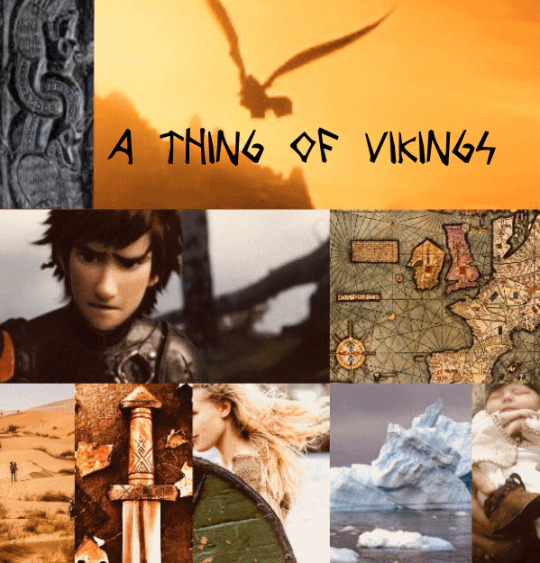
Chapter 129: And A Warm Embrace
During the periods of the Kingdoms of Francia, Brittany (Breton: Breizh), in its position occupying the westernmost peninsula of the region, was regarded as a stubborn outsider—culturally Brythonic Celtic instead of Gallo-Roman, with a different and distinct language, identity, and historical background. Beginning as independent petty kingdoms formed by displaced Celts from the Anglo-Saxon invasion of Britain, Brittany spent the next few centuries fully independent, occasionally joining forces with the Roman Empire against the likes of Attila the Hun, but otherwise being mostly occupied with domestic political matters and associating with their fellow Celtic nations in the Isles, occasionally sending reinforcements to the Cymru, Picts, Kernowyon, and Gaels as they fought against the Anglo-Saxon invaders.
Later, in the 9th century AD, Brittany became a tributary suzerain state to the Carolingian Empire under Emperor Charlemagne, who managed to impose vassalhood on the region, reducing the Breton lords to semi-autonomous status. This did not last long, however, as in the aftermath of Charlemagne’s death, they rebelled against the Carolingians, securing their independence as a unified kingdom of Brittany in 851 AD after defeating Charles the Bald at the Battle of Jengland. From there, they proceeded to expand their kingdom at Francian expense, taking large swaths of territory around the eastern extents of their peninsula, and reaching their greatest territorial extent in 867 AD.
Internal political disputes ensued, stopping the kingdom’s expansion, and rendering it ripe for conquest by Viking raiders in the early 900s; by 919 AD, the entire kingdom was fully occupied by Norsemen, who looted and pillaged many cities and monasteries without facing organized resistance. The region was eventually liberated from the Norse occupiers by Alan “Twistedbeard” II, grandson of King Alan the Great, the prior king of Brittany, between 935 and 939, culminating in an attack on the last Norse stronghold at Trans-la-Fôret by joint Breizh and Frankish forces. Meanwhile, to the neighboring east on what had once been part of the kingdom of Brittany, Rollo the Viking had settled in with his own men, offering allegiance to King Charles the Simple in exchange for claim to what would become known as the Duchy of Normandy.
With his lands in ruin from decades of war and looting, Alan could not hope to restore his prior kingship and likewise made the same decision as Rollo had, offering tribute to King Louis IV of Francia in 942 AD as the Duke of Brittany. This action ended Brittany’s time of independence and politically brought it into the Kingdom of Francia as the Duchy of Brittany. However, the newly-born duchy still had a long independent history and a cultural identity as separate from the rest of the kingdom…
—A History of Old Francia, 1432, Oxford Press
AO3 Link
33 notes
·
View notes
Note
i noticed the Iceland post from earlier
do u also play ck3? how powerful was iceland
haha yes I'm playing ck3. um it was the Reykjavik raiders and there were like 3600 guys to my 2500. eek! and I didn't have a whole lot of money to spare on mercenaries. but I think I overreacted w the raiders bc they're not that big of a deal I don't think? the places they're raiding are already norse-gael and it's my vassals land anyway so I'm not too bothered. tho maybe this has some extreme effect on me later idk. I've only been playing for a few days. but I think it's okay as long as they don't raid my main duchy
10 notes
·
View notes